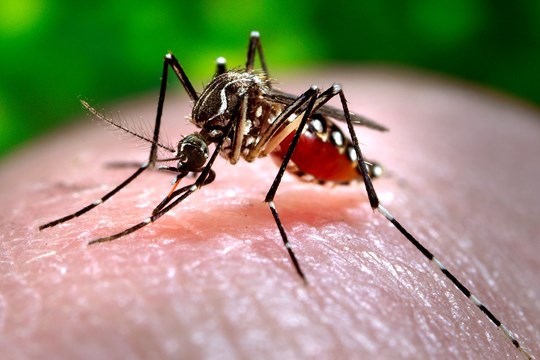
Tuesday, Apr 26, 2016
City of Little Rock Public Relations (501) 371-6801
Jennifer Godwin | (o) 501 371 4421 | (c) 501 804 4822
LITTLE ROCK, Ark. (April 26, 2016) – With warmer weather comes mosquitoes, and the City of Little Rock is asking residents to be proactive in aiding prevention efforts that will help eliminate breeding areas and reduce the risk of mosquito-borne illness.
The Centers for Disease Control and Prevention is providing guidance to state and local authorities on the health response to the Zika virus, with a focus on prevention through day-to-day mosquito control actions and early detection of the virus. As of April 20, 388 cases of Zika have been reported in the United States, all of them travel-associated.
The City is continuing its mosquito-eradication efforts through spraying, eradication discs in park areas, and monitoring and abatement through a partnership with the University of Arkansas at Little Rock Biology Department.
The City’s Public Works Department has started its spraying program to reduce the number of adult mosquitoes. Spray-mounted trucks cover City residential areas from around 5 p.m. – 9 p.m in the spring and summer months. In addition, crews respond to 311 requests for spraying. Spraying will be suspended in rainy, cool, or overly windy conditions, as the treatment is less effective.
The Parks & Recreation Department is inspecting City-owned areas for places with standing water or other conditions that lead to increased mosquito activity. Crews will deploy eradication discs to kill mosquito larvae for up to two months in parks and around neighborhood centers.
Through a contract with the city, Biology Department students operate and monitor mosquito traps placed throughout Little Rock and conduct larval samplings to identify the species of mosquitoes present.
These efforts, combined with an increased vigilance on the part of citizens, are key to keeping mosquito populations under control. Residents are urged to look around where they live to identify areas where mosquitoes could thrive, typically containers that can hold water. The Centers for Disease Control and Prevention recommend that people once a week empty and scrub, turn over, cover, or throw out items that hold water. Piles of leaves, tall grass, and weeds are other common places for mosquitoes to hide.
Screens should be installed on windows and doors, especially in homes without air conditioning. Mosquito netting is available at many retailers and can be used over strollers and cribs.
Residents should contact the City through 311 to request mosquito spraying.
The mosquito known to carry the Zika virus, the Aedes aegypti, is active during the daytime, and adult mosquitoes can commonly be found indoors in homes without window or door screens. Larval habitats are usually seen in containers outside the house, from plastic wading pools and pet water bowls to birdbaths and old tires.
The potential range of the Aedes aegypti includes the southern region of the United States, with most of Arkansas in the zone. The mosquito can be present in the area but not carry a disease.
Online resources:
Centers for Disease Control and Prevention Zika information
Arkansas Health Department Zika information


 E-NEWS
E-NEWS
 EXPLORE
EXPLORE
 NEWS
NEWS
 TRANSLATE
TRANSLATE
